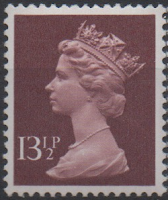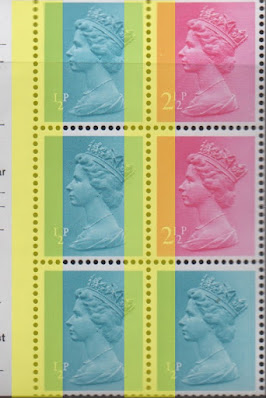In 2023, the British locomotive Flying Scotsman is 100 years old. A national treasure of engineering and design, it can be admired on tour or at the National Railway Museum in York, conjuring up the golden age of steam travel.
In February 1923, the steam locomotive that became the Flying Scotsman, built to a design of Nigel Gresley, emerged from the former Great Northern Railway (GNR) works at Doncaster. Initially known as No. 1472, this locomotive was the third of the ‘A1’ class to be built – and the first for the London and North Eastern Railway (LNER). The ‘A1’ was an entirely new type of locomotive. Trains of this period had become heavier, following the introduction of more luxurious corridor carriages (with toilets) and restaurant cars, and required more powerful locomotives.
By 1924, locomotive No. 1472 had acquired a new number (4472), smart embellishments to its green livery, the crest of the LNER on the cab side and the name Flying Scotsman. (The locomotive was named in honour of the express train service that had run on the east coast route between London and Edinburgh since 1862, and this has caused confusion ever since with other locomotives bearing the headboard The Flying Scotsman.)
In 1928, Gresley began to modify the A1s into an improved version, the Class A3. Flying Scotsman emerged as an A3 on 4 January 1947. In 1946, the locomotive was renumbered twice by Gresley's successor Edward Thompson, who devised a comprehensive renumbering scheme for the LNER. 4472 was initially assigned number 502 in January, but an amendment to the system led to its renumbering as 103 four months later. Following the nationalisation of Britain's railways on 1 January 1948, almost all of the LNER locomotive numbers were increased by 60000, and 103 became 60103 that December.
The locomotive set two world records for steam traction, becoming the first steam locomotive to be officially authenticated as reaching 100 miles per hour (161 km/h) on 30 November 1934, and then setting a record for the longest non-stop run by a steam locomotive when it ran 422 miles (679 km) on 8 August 1989 while in Australia.
The stamps
 |
| Set of 8 stamps to mark the centenary of the Flying Scotsman locomotive, 9 March 2023. |
The photographs and acknowledgements:
1st class: No. 60103 at Pickering Station on the North
Yorkshire Moors Railway, 2016, Allstar Picture Library Ltd/Alamy Stock Photo;
1st class: The
‘Christmas Dalesman’ steam special in the Yorkshire Dales
National Park, 2019 © John Bentley/Alamy Stock Photo;
1st class: The
‘Cathedrals Express’ crossing the Ribblehead Viaduct in the
Yorkshire Dales National Park, 2017 © John Bentley/Alamy Stock
Photo;
1st class: steaming through the town of Blyth in Northumberland, 2016 ©
Alison Leddy;
£1.85: in a blizzard at Heap Bridge on the East Lancashire
Railway, 2016 © Alan Padley;
£1.85: The ‘Cathedrals Express’ excursion
crossing the Royal Border Bridge at Berwick-upon-Tweed, 2016 © Ian
Rutherford/Alamy Stock Photo;
£1.85: at London’s Victoria Station, 2002 ©
PA Images/Alamy Stock Photo;
£1.85: close-up at Shildon, County Durham, 2019
© Clearview/Alamy Stock Photo;
Unfortunately all, except one (Victoria Station), of the photographs used for the stamp issue are after its major restorations, when on enthusiasts tours, and none reflect the period when it was actually in service with the railway system. This postcard from the Alan Pegler period shows it still numbered 4472; still not in normal service but at least it shows the number than many people know.
 |
| Picture postcard, Alan Pegler's privately preserved LNER No 4472 Flying Scotsman leaves Edinburgh Waverley with an enthusiasts special. |
The Miniature sheet
 |
| Flying Scotsman Centenary miniature sheet showing railway posters 9 March 2023. |
1st class: ‘Scotland by the Night Scotsman’ poster,
artwork by Robert Bartlett, 1932 ©National Railway Museum/Science & Society
Picture Library;
1st class: ‘LNER train service to and from Scotland’
advertisement, designed by HL Oakley, 1923 © HL Oakley/Mary Evans
Picture Library;
£1.85: ‘Edinburgh: Mons Meg’ poster, artwork by Frank
Newbould, 1935 © National Railway Museum/Science & Society
Picture Library;
£1.85: ‘Refuelling the Flying Scotsman’ poster, artwork
by Frank Newbould, 1932 © National Railway Museum/Science &
Society Picture Library;
Border featuring Pickering train station:
wall © imagespace/Alamy Stock Photo and bench © Neil Setchfield,
UK/Alamy Stock Photo.
Flying Scotsman licensed by SCMG Enterprises Ltd; Flying Scotsman® and designs © SCMG Stamp designs © Royal Mail Group Ltd 2023.
Technical details
The stamps and miniature sheet, designed by Steers McGillan Eves, are printed by Cartor Security Printers in lithography with PVA gum. The 50 x 30 mm sheet stamps are printed in four sheets of 60 in se-tenant pairs, perforated 14. The 41 x 30 mm stamps in the 146 x 74 mm MS are perforated 14.5 x 14.
All the miniature sheets in the Press Sheet of 15 have barcodes in the illustration we were provided with.
Prestige Stamp Book (click on the images for enlarged versions).
Pane 1: the 4 x 1st class special stamps
Pane 2: the 4 x 1st class £1.85 stamps
Pane 3: the miniature sheet stamps in the same order but with a background showing the inside of a railway carriage
Pane 4: definitive pane with a £2 and 3 x 20p Machin definitives coded M22L MPIL. This pane is printed in lithography.
The monochrome cover image, showing the locomotive numbered 4472, is of the special edition PSB.
Products
Set of 8 stamps, miniature sheet, 2 x FDCs, stamp cards (12), presentation pack, press sheet, prestige book, limited edition prestige book, coin covers (one with coloured £2 coin, although described on some publicity material as a 50p coin, one with a silver proof, one with a gold proof), framed set, framed miniature sheet, framed prints (4): 1st class Blyth, 1st class Ribblehead Viaduct, £1.85 Blizzard at Heap Bridge, close-up at Shildon.
In celebration of turning 100 in February 2023, Flying Scotsman will take part in various events between March and December including static displays, runs on the mainline, and visits to heritage railways. A special 100 Years, 100 Voices exhibition will be held at the National Railway Museum. The collectable £2 coin included in the coin covers was produced by the Royal Mint.
As usual we will not be stocking these products, they can all be obtained from the Royal Mail website and ordered from 2 March.
















































